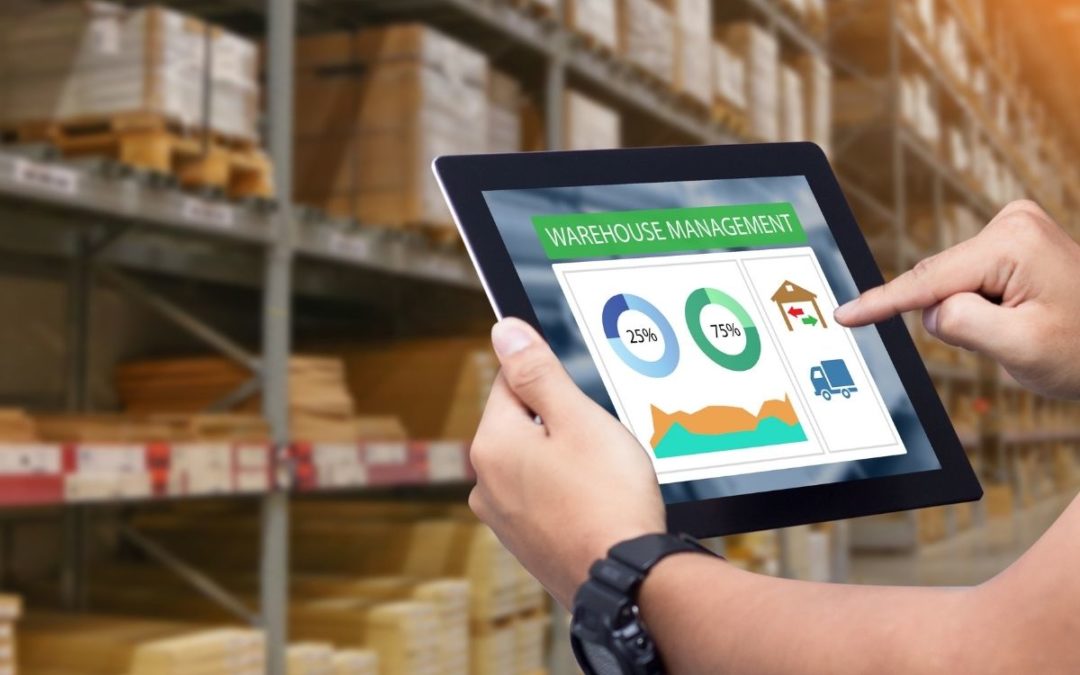
by ifs_admin | Warehousing & Distribution
Fulfillment services and warehousing so often go hand in hand. Both tend to fall under the blanket term for third-party logistics providers—3PL for short—which is essentially outsourcing specific services. While warehousing and fulfillment services are usually lumped together they are completely separate and stand-alone operations. Some providers, like IFS, are a one-stop shop for these services, while others are more of a cherry-picking deal. But not all 3PLs do the same thing, and certainly don’t cost the same.
For some companies, fulfillment services and warehousing are a necessary evil, but finding the right provider can be an absolute game-changer. To understand what you need from your warehouse and fulfillment service provider, first, you have to understand what each accomplishes.
Fulfillment Services
Fulfillment services are the heavy lifter of the two arms of this operation. Fulfillment services can include bulk product creation, primary and secondary packaging, as well as actual distribution of goods. The bigger your business gets the more unwieldy order fulfillment can get. It’s easy for fulfillment to get out of hand, things to get backed up, and quality to suffer if you’re attempting to go it alone. Trusting order fulfillment to professionals has the potential to pay for itself over time.
Along with creating, fulfillment services also take care of the packaging of your product. To state the obvious, the packaging is what keeps your products safe. Things like blister packaging, heat sealing, and boxing are what go into primary packaging. The safety elements of fulfillment services are rarely given a second thought by the consumer but are vital to distributors. While you may have a good system in place on your own, a facility specifically designed for fulfillment will simply be able to do more.
Despite the old adage, everyone judges books by their covers, which is why packaging is so important. We’ve gone over the importance of primary packaging, but secondary packaging is part of the most important part of a business—sales. Secondary packaging is the branded portion of fulfillment services. Boxes and wraps with your name and logo on them, extra coupons on store shelves, and the like are what secondary packaging is all about. This aspect of fulfillment services is what will draw consumers to your products and get you remembered for their future purchases.
Once your product is packaged, it needs somewhere to go. Fulfillment services, like Impact Fulfillment Services, also offer assistance in distribution. No more shuttling your own product from the kitchen to the distributor. Bringing on a fulfillment service will get your products in the best shape possible and get them to where it needs to go.
Warehousing
All of the great things that come with fulfillment services would mean little if there’s no place to keep everything. For the most part, 3PLs deal in bulk packaging, rather than smaller orders. Bigger orders mean the need for more space. Finding space for your product is a problem that can be easily sorted out by bringing on a warehousing service.
With a good warehouse in the picture, you will be able to keep more of your product ready for distribution. Having more products at the ready will cut down on the time it takes to restock, so customers will never be left wanting. Being able to mass-produce your product is great, but you want to make sure it’s being kept safe as well. Warehouses like those built by Impact Fulfillment Services are climate-controlled and the perfect place to keep your products safe and ready.
Warehousing seems a simple enough venture, but these facilities are anything but. The tech behind warehouses lends to safety as well as inventory. Keeping track of all of the units you have on the shelves will never be easier than it is with a warehouse.
Fulfillment services and warehouses can exist separately from one another but work best as a package. An all-inclusive 3PL experience is the easiest way to handle all of your fulfillment, distribution, and storage needs. Impact Fulfillment Services offers everything under one roof. Warehousing and fulfillment services can rack up quite the cost. But IFS offers competitive rates for the services. Top of the line across the board, IFS has streamlined every process and put in place check systems to keep your product perfect. If your business is ready to take the next, and one of the biggest, look to IFS to give you the best offer around.
To learn more about our co-packing services, speak to a specialist!
#impactfs #supplychain #copacking #co-packing #impactyourbrand

by Matt Tullio | Co-Packing
The importance of packaging is a bit of a sleeper art. It is a silent way to get consumers interested in your product. Proper packaging is a marketing tactic in and of itself, and perhaps the most lasting one. How you present your product to the masses is essentially the first impression your business has on the world. In most cases, the packaging is the best way for a budding company to make a name for itself. Having easily distinguishable and clean packaging will generate invaluable word of mouth for your brand. Good packaging that jumps at people from the shelf will sell itself before long.
The Importance of An Appealing Aesthetic
Packaging isn’t generally thought of much in detail, but its importance is undeniable. After you have the perfect product, you need to optimize your packaging. Your packaging is part of your brand, and your brand is your business. Making sure that everything looks its best and is uniform is important to draw in consumers. Having specific and recognizable packaging encourages customer retention and brand loyalty. Consumers tend to seek out the familiar. If you have the resources to make your products look consistent and uniform, your consumer will thank you.
Secure Products for Happy Consumers
More than recognition and marketing value, proper packaging helps keep your product safe. The safety of your product speaks for itself on your end, you want to make sure your product gets to market in one piece. But solid packaging lends even more value to your business. With reliable packaging, you have a reliable product that will get to your consumer in one piece every time. This means that no matter what you sell—cosmetics to pharmaceuticals—your customer can count on it arriving in prime condition every time. Having that level of quality control and care will stick with people time and time again.
Get Help Building Your Brand
There are so many moving parts when it comes to business, you can’t let packaging slip through the cracks. The potential for customization and brand promotion is too precious to pass up. Figuring out your packaging and branding isn’t always the easiest, but the right co-packing company can help you figure everything out and bring it to fruition. The right co-packer, like IFS, can help in every step of the co-packing and distributing process. From creation to the market shelves, co-packing takes the pressure of doing it all off of you and your team and shares the load. For upstart businesses that want to go the extra mile but don’t have the right team, a co-packer can be a huge help.
Your company needs to put branded packaging at the top of the list. Creating a unified image for your brand will make a lasting impression on consumers. It will get you remembered when consumers are strolling down the aisles. Sometimes it can even be what gets you chosen over a competitor. There is a lot of power in aesthetic appeal. Distributing reliably and effectively packaged goods will bolster your reputation more than any ad campaign. Good word of mouth and a dependable client base are two things that every company needs, and packaging plays a huge role in both.
To learn more about our co-packing services, speak to a specialist!
#impactfs #supplychain #copacking #co-packing #impactyourbrand

by ifs_admin | Co-Packing
Technology is an integral part of daily life, the same goes for the contract packaging business. There isn’t a single industry that doesn’t rely on some form of technology today, but one as intricate as co-packing truly thrives with it. When it comes to the success of co-packing business technology is a cornerstone element. The importance of technology in co-packing reaches all corners of the industry. The systems put in place help with accountability within the facility, and visibility for the client. Technology makes it possible for co-packing to be as safe and streamlined as possible. Co-packing without technology would be a vastly different and less effective industry.
Accountability
When it comes to business models with as many moving pieces as co-packing, accountability is key. In order to correct, and ultimately avoid, mistakes it’s important to know who has had their hands on what and when. Having systems in place that act as checkpoints during the co-packing process is the best way to promote accountability and improve quality. These systems are bolstered by technology. Using electronic documentation in the facility to update the whereabouts of an order is common practice in any facility. Utilizing technology to keep track of orders from start to finish is the best way to make sure every step is being followed properly. If ever there is a mistake in production, learning what went wrong and right is as easy as checking the digital log.
Streamlining
Without technology, just about everything we do in a day would not be as efficient. In co-packing, whether it’s the machines, workspace, and supplies that are used for production or the final checklist before shipping, technology makes streamlining possible. Streamlining a process depends on several things, chief among them are system performances, communication, and practice; technology handles two of the three. Communication on a large team and keeping everyone up to speed can be tricky. That’s where interdepartmental online chat platforms, like Microsoft Teams, come in handy. Report system errors, update the team about projects, give heads-ups on potential issues, all from one easily accessible channel. Running analytics on internal networks and equipment functions are made easier with technology. To streamline a process everything must work at its peak. To keep things at peak condition technology must be present.
Transparency
In co-packing there has to be a lot of trust between client and facility. Keeping client relationships strong in co-packing requires transparency. Technology is the only thing that makes this level of transparency possible. From the initial point of contact all the way to shipping products to their destination, there are dozens of steps to co-packing. When a client partners with a co-packer they have to know that their product is being taken care of. A company has to go through several validation steps before they’re ready to go to a co-packer, knowing exactly what they are getting as they’re getting it is a selection differentiator. Rather than making regular visits to the facility, co-packers can keep clients at ease through technology. Whether it’s automated messages or live updates on the entire process, transparency is peace of mind.
Safety
While safety and security are primarily the responsibility of people, technology also plays a role. Having machines and systems that are smart enough to report on themselves is one-way technology that has a hand in safety. Additionally, running reports on the systems in place and keeping tabs on maintenance eliminates potential hazards. This applies to the safety of the product as well as employees. Technology makes it easier to keep facilities running smoothly and safely. Having a set of checklists or protocols in place that are backed by a digital system is either the first line of safety or an extra safety net, and is environmentally friendly. A safe work environment is fundamental to any business, technology helps with that.
Each of the technological benefits outlined above all play into each other to create a well-oiled co-packing machine. Transparency and accountability go hand in hand; accountability is an element of safety; safety must be in place for streamlining to happen. The industry of co-packing is the cross-section of hands-on work and the advantages of technology. Co-packing cannot be fully automated just yet, but it couldn’t be the industry it is without technology. When it comes to co-packing technology is key.
To learn more about our warehousing services, speak to a specialist!
#impactfs #supplychain #copacking #impactyourbrand

by ifs_admin | Co-Packing
Secondary packaging can be utilized in all sorts of industries, including pharmaceutical packaging. Different products that go through secondary packaging require their process, whether it’s food or cosmetics. Pharmaceutical packaging is no exception and could be even stricter. Because it is dealing with a thing as delicate as medication, special considerations and measures have to be taken. There are laws and structures set down by the FDA to make sure that these products are packaged properly. Secondary packaging is the best way to make sure that pharmaceuticals arrive safely to the masses.
The top priority for pharmaceutical packaging is safety. This form of secondary packaging changes depending on what kind of pharmaceuticals are being packaged. For example, a vile of insulin would come with different safety measures than that of a medication that comes in a blister pack. Ensuring that the right pharmaceutical packaging practices are being put in place is paramount to a job well done.
The active agents in medications and drugs are highly sensitive to all kinds of outside elements. These elements can cause a degradation in exposed pharmaceuticals which can then impact the efficacy of the product. Simple things like light, climate, and oxygen can do a world of damage to even the most common of pharmaceuticals. Secondary packaging provides barriers from these and other factors to keep the product, and its users, safe. Without proper secondary packaging, we could not be guaranteed the safety of vital medications.
In addition to keeping pharmaceuticals safe on shelves and in transit, secondary packaging keeps them sterile. Potency is one thing, contamination is another. A thick layer of plastic or a specialized cap will do wonders for keeping pharmaceuticals away from external contaminants. While those extra layers of pharmaceutical packaging may seem annoying at the moment—the plastic wrap on the child-proof cap, the aluminum seal, the wad of cotton, etc—they are what keep the medications we rely on safe to use.
Durable packaging is a key part of pharmaceutical packaging safety, but it’s not the only thing. Accountability and transparency have their safety values. Secondary packaging entities, like IFS, take careful notes on who has touched what and when on the supply line. This kind of visibility keeps products and people safe. If something goes wrong, knowing where the problem began is the only way to correct things and keep it from happening again. Secondary packaging ensures and documents that products are being handled safely and properly.
The pharmaceutical industry caters to millions of people worldwide. It’s nearly impossible to find a household that doesn’t have at least one pharmaceutical in it, no matter its purpose. Without secondary packaging, it would be impossible to know if the medications you’re taking are sterile and at a dosage that corresponds to the label. When you open a new bottle of pain relievers or uncap an over-the-counter remedy you want to be certain that you are the first person to open it.
Secondary packaging for pharmaceuticals is the last line of defense. The measures that are taken in pharmaceutical packaging are done to keep consumers all over the world safe.
To learn more about our contract packaging services, speak to a specialist!
#impactfs #supplychain #copacking #impactyourbrand

by Angela Mendes | Co-Packing
As we have discussed, in the world of contract packaging there is a need for constant improvement. These improvements can come by way of safety, organization, or standard shifts. When it comes to implementing these improvements we recommend starting with 5S.
Understanding 5S in Contract Packaging
The 5S’s are a group of five Japanese words that are part of an ideology of improvement. Each word has its own definition and role in the grander scheme of your business. These structures are applied to workspaces, inventories, and any day-to-day activity that needs polishing.
- Seiri (sort)
Think of this as the decluttering aspect of the 5S’s. When you sort through your tools, you will decide which necessary tools can be removed altogether. This can be done with steps in a project as well. - Seiton (set in order)
Once you have decided what you need, arrange everything as it needs to be beforehand. This kind of preparedness is a big-time saver in contract packaging, specifically. - Seiso (shine)
Seiso is also referred to as cleanliness. Having a clean workspace has its own set of perks. A clean workspace will make for fewer mistakes, potentially harmful work staff accidents, and even ramp up productivity. - Seiketsu (standardize)
Maintain the first three S’s every day to achieve Seiketsu. This will ensure that everything goes accordingly every day, as long as it’s the standard. - Shitsuke (sustain)
The final step is to sustain S’s one through four. This will help you and your employees form a habit. Forming habits, good habits at that, is the only way to sustain a business. Using the 5S’s will help you get to a more streamlined workflow.
Implementing the 5S’s
The benefits of putting the 5S’s to work in your contract packaging practices are extensive. If you have a neater, or shinier, workspace it becomes safer and easier to navigate. You won’t have to waste time tracking down tools because they will all be sorted in their exact place every time. Instructions and procedures will be second nature to all staff because they will have been standardized.
To learn more about our contract packaging services, speak to a specialist!
#impactfs #supplychain #copacking #impactyourbrand

by Angela Mendes | Co-Packing
The business world is always changing, so continuous improvements are essential. For the contract packaging industry, there are a lot of plates spinning all at once. A co-packing center has to be a well-oiled machine. In order to keep things going, changes must be made to optimize things like safety, space, and speed.
There are easy ways to make simple but effective improvements in co-packing methods. It doesn’t have to be a complete overhaul, changes can be as minor as deemed fit. The implementation of continuous improvement will result in benefits across the board.
Where to Start
Change can be a big undertaking. Continuous improvement can be boiled down to just a few simple steps. It isn’t all that common for core changes to be made. At the end of the day, it all boils down to managing a few key things. Each step feeds into the next to create a cycle of continuous improvement.
These following tweaks will fine-tune the entire co-packing process and benefit both the company and the client.
There are always improvements to be made, some more obvious than others. You should always be analyzing your systems and processes. Whether big or small, looking for ways to improve is the responsible thing to do. Putting things like strict organization, clean-up, and habit forming into action can be done quickly with unlimited advantages.
Organization and 5S
Nothing turns an operation around like organization and visual systems. Making sure that everything has a place will drastically improve how things work. Organization includes setting up procedures and methods that will streamline all processes.
Whether it’s keeping the facility’s tools in order or having shadow boards up in the facilities, organization should take top priority.
Clean-Up
Keeping the work area clean and orderly will improve productivity and reduce accidents. A neat facility cuts down on missteps and accidents that could cause problems and cost money.
If excess materials are left out on the floor that could cause employee accidents or line shutdowns. Maintaining a workspace that looks tidy will improve efficiency and keep the product and employees safe.
Habit-Forming
The more diligent companies become with putting these particular procedures in place, the easier it will all become. Forming a habit requires a certain amount of discipline. Workers and management alike have to be willing to go through the steps every time, not just through the motions. If there is a commitment to what needs to be done companies will end up with improved operations and a more sustainable strategy. The key here is to engage everyone in the process so they will buy into the value continuous improvement will bring to customers and to them personally.
Delivering Value
Now that the basic steps are in place, you can embark on your continuous improvement journey. The journey can begin with simply standing on the production or warehouse floor and looking for waste. Waste can mean many things but in sum, it simply means movement or activity that occurs, that does not deliver value to the product or service. For example, if a person must walk through isles to look for inventory that was not put away properly, the effort consumed looking for the inventory is waste. Another form of waste would be a slow process that bottlenecks another process so employees are waiting for work. Whatever the challenge may be, there is likely a better and faster way to deliver the end result. Co-packers will invest in engineers or continuous improvement specialists to do Line Balancing. This means that the work is looked at and balanced to ensure a proper and fast flow of work.
The value created by focusing on the flow of work is the work gets done faster and more work can get done. This results in customer satisfaction, because of their ability to scale and shareholder satisfaction because it costs less money to produce more work. The added benefit is that employees enjoy their work because it is productive and not burdensome.
To learn more about our contract packaging, speak to a specialist!
#impactfs #supplychain #copacking #impactyourbrand





